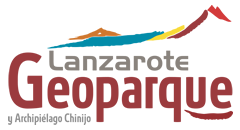Project Description
On the coast of Piedra Alta, a conglomeratic deposit has been observed with fossiliferous limestone cemented blocks located at 16-18 m s.n.m. which have been interpreted as a tsunami deposit. The origin of this tsunami is believed to be related to a mega-slide that occurred during the marine isotope 9.3 stage. The deposit rests on the basalts end of the inferior Pleistocene dated at 820 ka originating from the Montaña Roja volcano. Further north they are covered by the lava of the Montaña de Femés volcano 196 ka. The fossils included in the deposit correspond to the Patella genre, typical of the meso-littoral or intertidal zone and other well-known species such as the upper limit of tides indicator, which appears along with fragments of coral infra-littorals. Circa-littoral gastropods are also present and in perfect condition, without bearings and other Senegalese species. This indicates that there are mixtures of deep-sea species and shallow coastal species in marine fossils.
The main interest of this geosite is of a sedimentological type. It has also high paleontological interest. It is the only tsunami deposit described on the island of Lanzarote and only one of a few described in the Canary Islands. The observation conditions are good, it can be seen along over 2 km of coastline.
The main interest of this geosite is of a sedimentological type. It has also high paleontological interest. It is the only tsunami deposit described on the island of Lanzarote and only one of a few described in the Canary Islands. The observation conditions are good, it can be seen along over 2 km of coastline.

